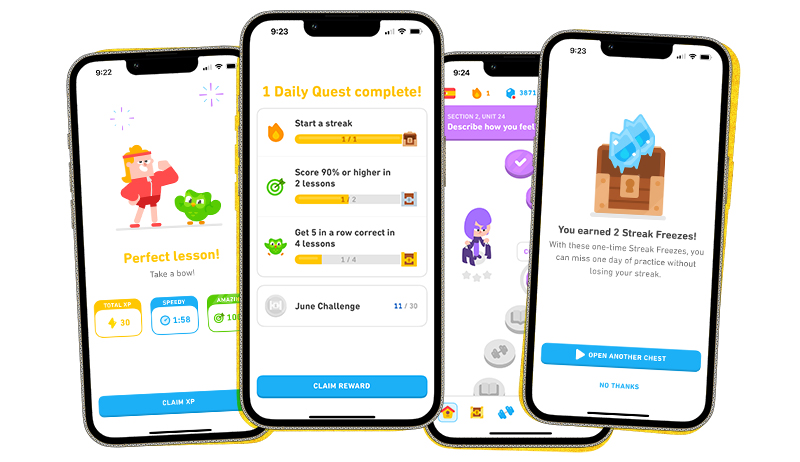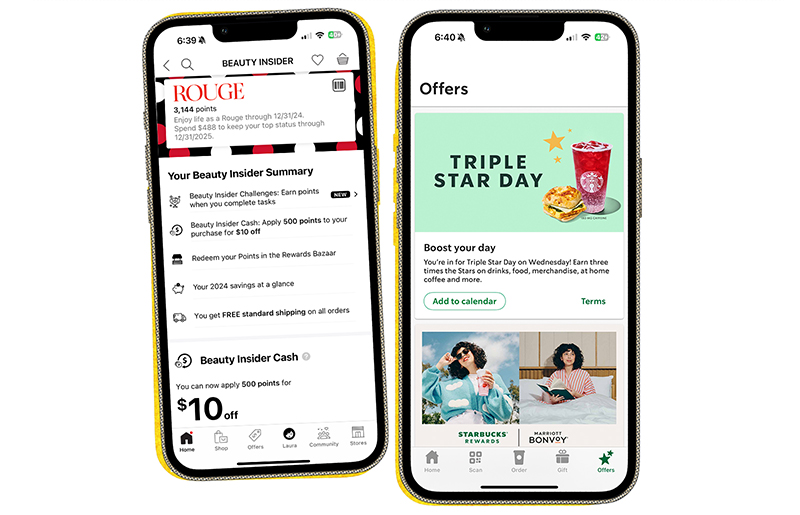The climate crisis is no longer a looming threat; it’s a pressing reality demanding action.
Marketers have a unique opportunity to influence consumer behavior and promote positive impact, including those related to climate change and environmental responsibility. Enter green marketing, a powerful tool for businesses to not only connect with environmentally conscious consumers but also make a genuine difference for the planet.
What is green marketing?
Green marketing, also known as environmental marketing or eco-marketing, is a business practice that promotes products, services, or practices that are environmentally friendly. It’s about going beyond simply selling a product to actively contributing to a more sustainable future.
Green business practices that can be marketed to consumers might encompass a wide range of initiatives:
- Modifying existing products: Developing products with recycled materials, promoting reusability, or focusing on energy efficiency.
- Changing production processes: Implementing sustainable manufacturing practices, minimizing waste, and utilizing renewable energy sources.
- Using eco-friendly distribution processes: Optimizing logistics for reduced fuel consumption and exploring greener delivery options.
- Using sustainable packaging: Opting for biodegradable or recyclable packaging materials to reduce landfill waste.
- Modifying advertising: Crafting messaging that emphasizes the environmental benefits of your product or service and avoiding misleading claims.
- Creating new products that reduce a consumer’s carbon footprint: Developing products designed for long lifespans, repairability, or energy efficiency.
- Making public donations to nonprofit organizations with sustainability initiatives: Demonstrating your commitment to environmental responsibility beyond your core business practices.
Why go green? The benefits of green marketing
The shift toward sustainability isn’t just a trend (though it is trending— more on this later); it’s a fundamental change in consumer behavior. Here’s how green marketing and environmentally friendly business strategies can benefit your business:
Meeting consumer demand
Studies consistently show a growing preference for eco-friendly products and companies with strong sustainability practices. By embracing green marketing, you tap into a rapidly expanding market segment.
Brand reputation
Consumers are increasingly associating environmental responsibility with brand trust and loyalty. Green marketing allows you to build a positive brand image and foster deeper connections with environmentally conscious consumers.
Competitive advantage
In a crowded marketplace, green marketing can differentiate your business from competitors. Sustainable practices and a commitment to the environment can set you apart and attract environmentally responsible partner organizations and consumers.
Increased efficiency
Embracing a sustainable approach often leads to cost savings, even if it requires an extra upfront investment. Reduced resource consumption, waste minimization, and energy efficiency can all translate to improved profitability in the long run. For example, switching to LED lighting in your facilities might be expensive upfront, but will ultimately reduce energy consumption and utility costs.
Regulatory compliance
Environmental regulations are constantly evolving and impact a wide array of business sectors. Proactive green marketing efforts can help you stay ahead of the curve and avoid potential legal or financial repercussions.
Seeing green: Examples of green marketing in action
The benefits of green marketing are clear, but how does it translate into real-world campaigns? Let’s take a look at some innovative companies that are putting their sustainability commitments into action:
Patagonia’s “Don’t Buy This Jacket” Black Friday ad
Way back in 2011, Patagonia ran a full-page ad in the New York Times that gave readers one simple instruction: Don’t buy this jacket.
This unconventional campaign challenged consumer culture and promoted product longevity. Patagonia encouraged customers to repair their existing jackets instead of buying new ones, highlighting their commitment to sustainable practices and reducing environmental impact. And even though more than a decade has passed since this ad put us all in an environmentally minded chokehold (and even though Patagonia has been in the news for less-admirable measures recently), this campaign still discussed in marketing boardrooms and college classrooms.
Coca-Cola’s PlantBottle campaign
More recently, Coca-Cola addressed plastic waste concerns with its still-ongoing PlantBottle initiative. These bottles are partially made from plant-based materials, showcasing the company’s commitment to innovation and reducing its environmental footprint. The company seeks to collect and recycle or reuse 100% of what it sells by 2030 and support a Net Zero carbon goal for 2050.
IKEA’s “People & Planet Positive” campaign
IKEA’s campaign highlights its commitment to sustainability throughout its supply chain by balancing social impact and environmental protection. Its focus is on using recycled materials in its furniture, promoting energy efficiency in its products, and sourcing wood from responsibly managed forests. IKEA states that its sustainability ambitions and commitments are set for 2030 in line with the UN Sustainable Development Goals. The company also promotes its “zero-waste” mindset through a new circularity campaign in which IKEA offers furniture buy-back and resale options in certain markets to further promote sustainability.
Green marketing on TikTok
Another (and perhaps more surprising) place where green marketing practices are growing is TikTok. In early July 2024, a handful of creators started making “underconsumption core” videos showcasing their simple lifestyles on the platform. In the few short weeks since then, thousands have followed suit. The “underconsumption core” or “underconsumerism” trend on TikTok is all about rejecting excessive consumerism and embracing a more minimalist lifestyle.
But this trend goes beyond just personal choices. It has surprising connections to the world of green marketing. The trend focuses on reducing environmental impact and quality over quantity. It’s a sharp contrast to typical influencer marketing involving product consumption, and the trend showcases shifting consumer values in a new way.
These examples showcase different approaches to green marketing. Some green marketing strategies focus on product innovation (PlantBottle), others emphasize ethical sourcing and production practices (IKEA), while Patagonia’s campaign and the recent TikTok trend directly challenge consumer behavior. The key takeaway is that successful green marketing goes beyond messaging; it requires a genuine commitment to environmental responsibility.
Implementing green marketing strategies: A framework for success
As you can see in the examples above, going green isn’t just about slapping a recycled symbol on your packaging. Authentic green marketing requires a holistic approach that integrates sustainability throughout your business practices. Here are some key strategies we can extract from the successes above to consider implementing in your green campaigns:
- Showcase sustainability: Transparency and authenticity are paramount. Don’t just tell consumers you’re green; show them. Highlight your ongoing efforts to reduce your environmental footprint and prioritize genuine transparency in your messaging.
- Prioritize sustainability in all operations: Your green marketing strategy must align with a green business strategy. Consider a product lifecycle assessment to identify areas for improvement. Prioritize sustainable sourcing practices throughout your supply chain to minimize your environmental footprint.
- Secure partnerships and engage the community: Collaborate with environmental organizations or support local sustainability initiatives. Building partnerships showcases your commitment to a broader movement and allows you to leverage the expertise of established organizations.
- Measure your impact: Track and report on the environmental benefits of your green marketing and business efforts. Data and metrics are powerful tools that demonstrate the effectiveness of your strategies and hold you accountable for your sustainability goals.
How is green marketing different from greenwashing?
Green marketing is a powerful tool, but it needs to be wielded responsibly. Greenwashing, or making misleading or unsubstantiated claims about environmental benefits, erodes consumer trust and ultimately backfires. You can avoid falling into this trap with transparency and authenticity in your campaigns. You must back your claims with data, certifications, and science. This will help you avoid cliches that come across as disingenuous. You also must focus on the journey. Green business practices and marketing aren’t “one-and-done.” They require serious long-term commitment.
It isn’t easy being green (but working with us is)
So, is it easy being green? Well, it takes effort and commitment. But with the right approach and a dedicated partner like Tallwave, you can make a real difference while connecting with environmentally conscious consumers and achieving your business goals.
Here at Tallwave, we’re passionate about helping businesses navigate the world of green marketing. We understand the importance of authenticity and transparency, and we work closely with our clients to develop data-driven strategies that genuinely align with their values.
Ready to cultivate a greener marketing strategy? Tallwave can help you plant the seeds for a thriving, sustainable brand. Let’s discuss how we can help your business blossom with authentic green marketing practices. Let’s work together to cultivate a greener future, one campaign at a time.










